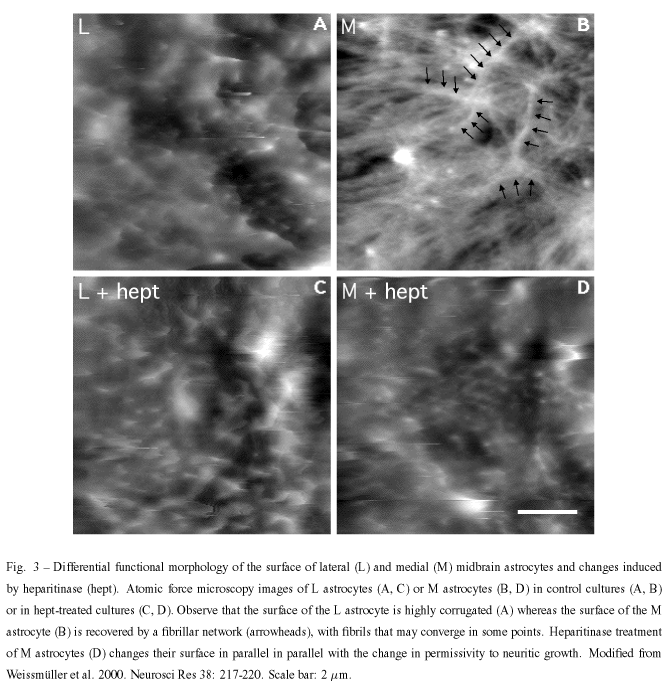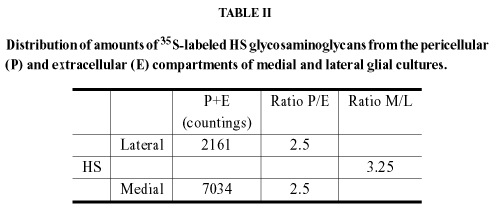Bilaterally symmetric organisms need to exchange information between the left and right sides of their bodies to integrate sensory input and to coordinate motor control. Thus, an important choice point for developing axons is the Central Nervous System (CNS) midline. Crossing of this choice point is influenced by highly conserved, soluble or membrane-bound molecules such as the L1 subfamily, laminin, netrins, slits, semaphorins, Eph-receptors and ephrins, etc. Furthermore, there is much circumstantial evidence for a role of proteoglycans (PGs) or their glycosaminoglycan (GAG) moieties on axonal growth and guidance, most of which was derived from simplified models. A model of intermediate complexity is that of cocultures of young neurons and astroglial carpets (confluent cultures) obtained from medial and lateral sectors of the embryonic rodent midbrain soon after formation of its commissures. Neurite production in these cocultures reveals that, irrespective of the previous location of neurons in the midbrain, medial astrocytes exerted an inhibitory or non-permissive effect on neuritic growth that was correlated to a higher content of both heparan and chondroitin sulfates (HS and CS). Treatment with GAG lyases shows minor effects of CS and discloses a major inhibitory or non-permissive role for HS. The results are discussed in terms of available knowledge on the binding of HSPGs to interative proteins and underscore the importance of understanding glial polysaccharide arrays in addition to its protein complement for a better understanding of neuron-glial interactions.
astrocytes; axon growth; extracellular matrix; heparan sulfate; midline; midbrain





